I recently wrote an essay on the situation between Haworthia retusa and Haworthia mirabilis at Komserante east of Riversdale. The essay was entitled “My view of names” and is posted on the HaworthiaUpdates.org web site. Etwin Aslander posted some pictures from what he called Kruisrivier. These caught my eye because they did not look like the plants I know from a place of the same name. My known population is JDV95/62 and generally these plants have the dark colour and rough surface texture of H. mirabilis. The issue is that they are spring flowering whereas H. mirabilis is generally considered and observed to be late summer flowering. Etwin indicated to me where he had found his plants and I duly went to look.
In the process I incidentally called on a well known H. retusa population at the Skietbaan locality south of Riversdale. There has been a dramatic turnabout in the appearances of these plants since I last looked there 2 years ago. Whereas there were then huge clones well above ground level, the plants were now again smaller and drawn into the ground. I experienced this dramatic shift in plant appearances just west of the Frehse Reserve many years ago when there were giant size plants as opposed to my first visit when the plants were really small and withdrawn.
Kobus accompanied Daphne and I to Kruisrivier where the owners Wilhelm and Mandi Zietsman were extremely helpful. They told us also of a neighbor, Gert van Rensburg, who had also seen the same plants on his farm to the west. Mandi accompanied us on a jaunt to find that farmer and failing that we explored north of the original Kruisrivier locality. There we found another population of plants as well as H. floribunda (see Set 1 MBB7998). These two species H. retusa and H. floribunda were occupying different habitat and spaced about 100m apart. The H. floribunda was numerous and rather smooth leaved as well as paler green in colour than I expect from that species. The H. retusa-like plants were much smoother in surface texture than the original known population and they were in bud (see Set 2 MBB7999). We went back to the older population just to confirm that they were in bud too as we expected. Just so and the buds were just emerging from the rosettes. The plants were generally smaller than they were at a previous visit (see set 3 JDV95/62).
We parted company with Mandi Zietsman, and went off westwards intended to explore the Klein Kruisrivier area that seemed to better fit Etwin’s site indicator. By good fortune we ran into Gert van Rensburg of Wegwysersrivier. He eyed us very suspiciously indeed and obviously very reluctant to show anyone the plants. However, he very kindly relented, took us to the spot and left us to freely photograph and explore (see set 4 MBB8000). The plants can be described as midway between the generally rougher surfaces of JDV95-62 and the smooth surfaces of MBB7999. What was more dramatic is that there were six flower spikes so that flowering is possible as early as July 6th.
We returned via another route regretting leaving distant habitat unexplored. But we did find another population of H. floribunda, a little more toothed and perhaps brighter green than at Kruisrivier.
I also note that I long ago confirmed Smith’s record for H. retusa ‘turgida’ at Klein Kruisrivier in the upper Wegwysersrivier Gorge. This is the small spinose proliferous version known elsewhere from the Langeberg Mts.
Digesting this new information is a bit difficult in view of the very opposed views of what names mean and how they should be applied. Taking all the populations that I have explored and written about, my perspective is further to a view expressed in Haworthia Update 7. This is that H. retusa and H. mirabilis are uncomfortably close. The only thing that appears to separate them is the yellowish green and smooth tendency in H. retusa and the darkish green and surface rough tendency in H. mirabilis. Further to that is of course the question of spring flowering versus late summer flowering. But I have already reported several case of hybridization across this divide as well as the Komserante situation. Here we now have plants in three populations that occupy middle ground and one of these populations has a significant degree of a winter flowering capacity. The identification should perhaps utilize the chemical equilibrium symbol. This is not quite it “↔” as the better symbol comprises halved arrows pointing in opposite directions.
I wish to add that in the case of plants I attribute to H. ‘turgida’ at Towerlands, I commented on the very real possibility of a close connection to H. emelyae. There is also evidence for this elsewhere. I use the name ‘turgida’ like this because of the uncertainty of it really being H. retusa var. turgida or perhaps H. pygmaea.
My experience in other situations viz. H. limifolia, H. herbacea/H. reticulata, H. arachnoidea/H. mucronata, H. cymbiformis/H. cooperi, Kiewietsvlakte etc. all suggests to me that the view of species is grossly distorted in the splitter direction. It is clear to me, if to no one else, that H. retusa and H. mirabilis form a very cohesive entity with ramifying oddities the length and breadth of the distribution range. I do not cover this issue here, but there is the added complication of the involvement of H. floribunda. It seems to be very discrete in most places, whereas at others it seems to get lost mainly (only?) in H. mirabilis. This may be because the introgression is favoured by the same flowering season. H. retusa and H. mirabilis are drifted apart by the difference in flowering season but it is by no means anything more than a general observation.
I have added the images of the available flowers as well as that of a bud to show the flared fishtail bud-tip that the southern Cape species tend to have. The flowers are variable and it is difficult to make a statement that characterizes them i.e. no composite image forms.
Acknowledgement
I would like to acknowledge Etwin Aslander’s input. Wilhelm and Mandi Zietsman were extremely helpful. Gert van Rensburg was surprisingly well informed about the plants too and very generous in his attitude to us. Part of the pleasure of field work is meeting people like this.
Set 1. MBB7998 H. floribunda Kruisrivier
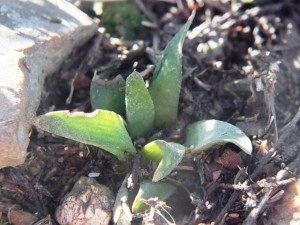
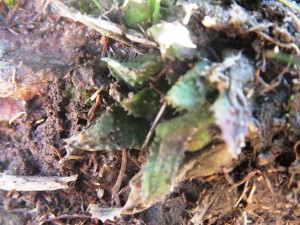
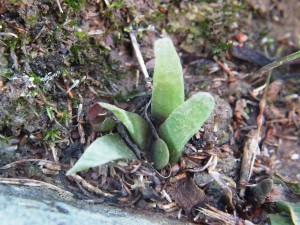

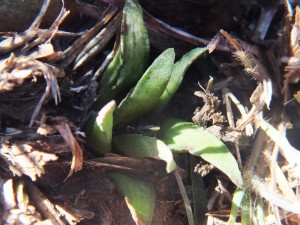
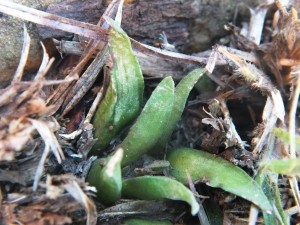
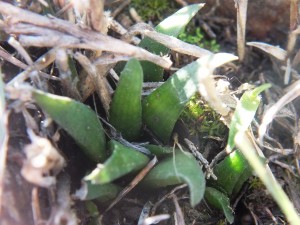
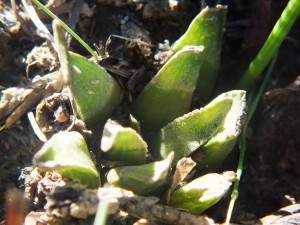
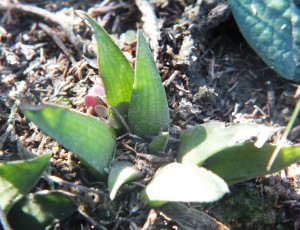
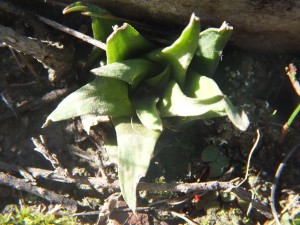
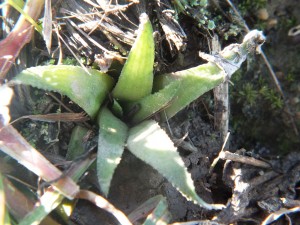
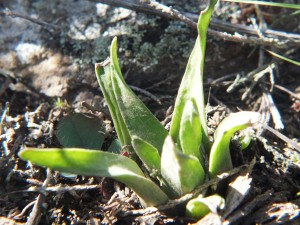
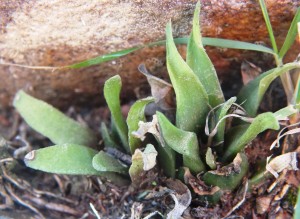
Set 2. MBB7999 H. retusa Kruisrivier
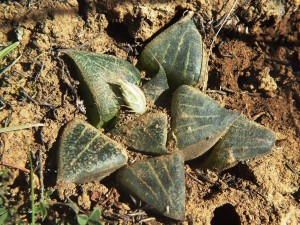
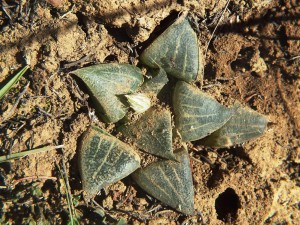
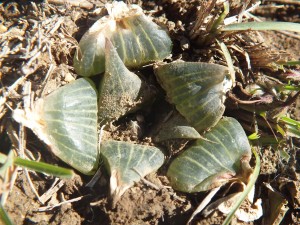

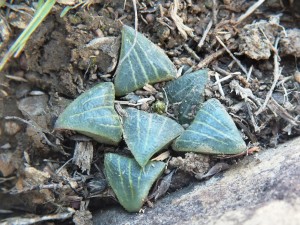
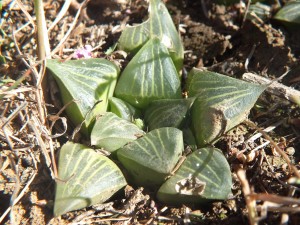
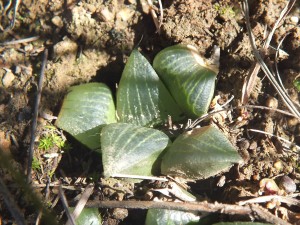

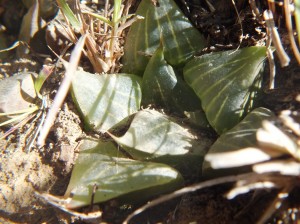
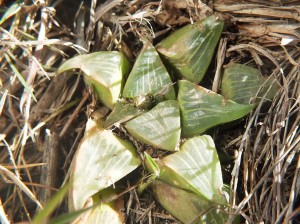
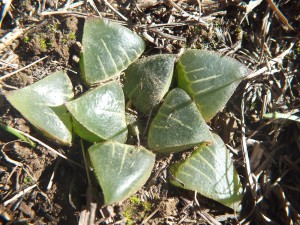
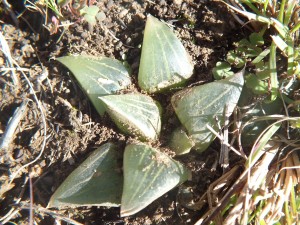
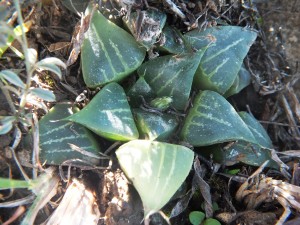
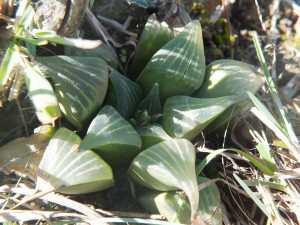
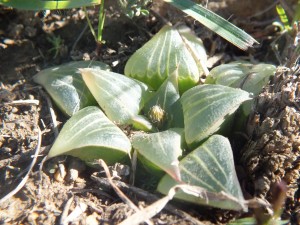

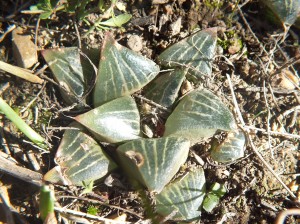
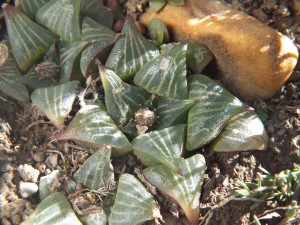
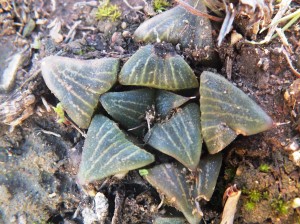
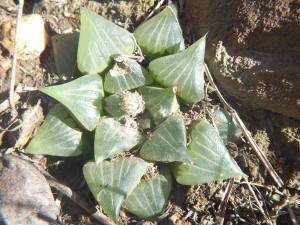
Set 3. JDV92/65 H. retusa Kruisrivier
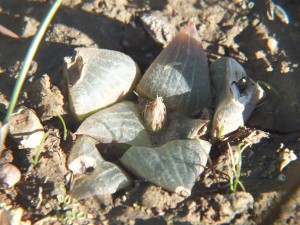
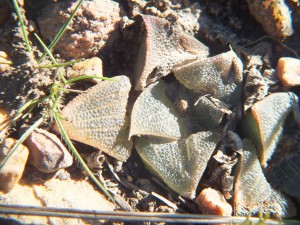

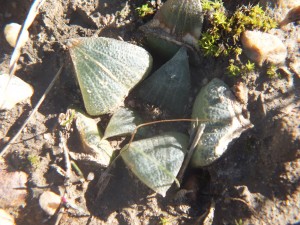
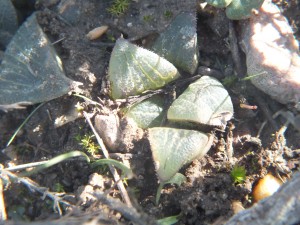

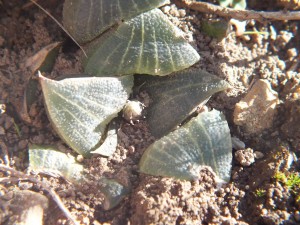
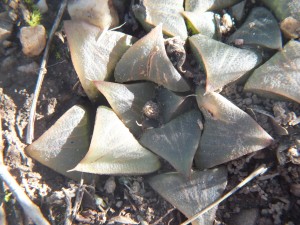
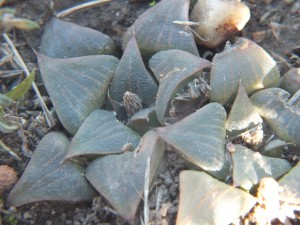
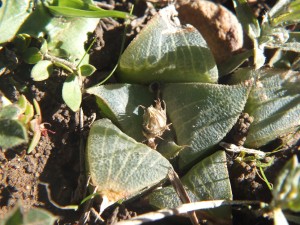
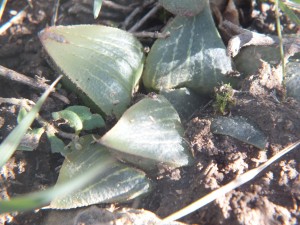
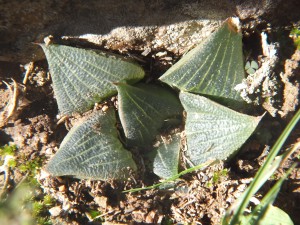
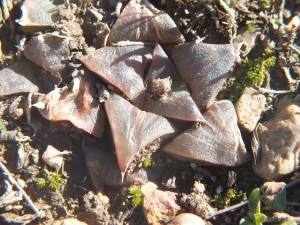
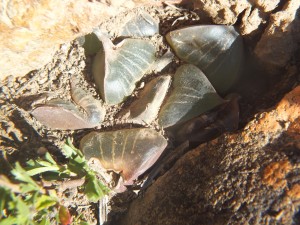
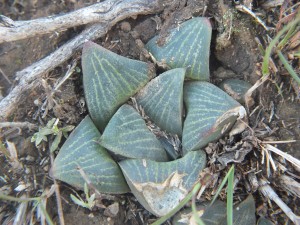
Set 4. MBB8000 H. retusa Wegwyserivier
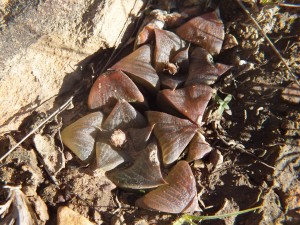

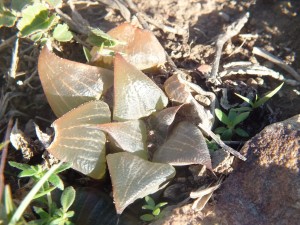

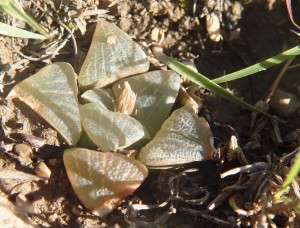
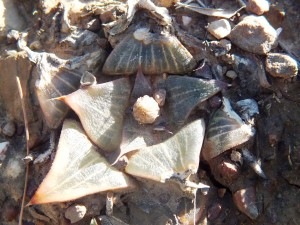

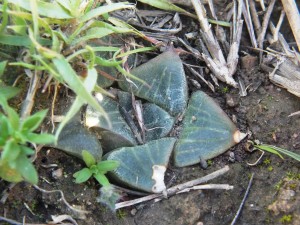
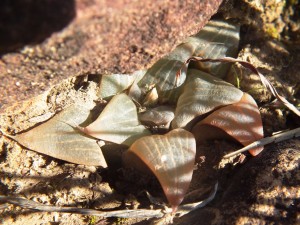
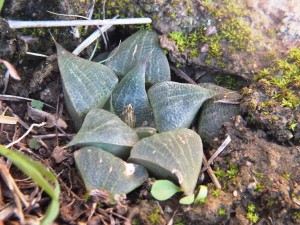
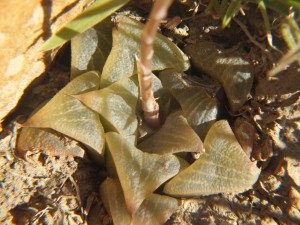
MBB8000 flower faces
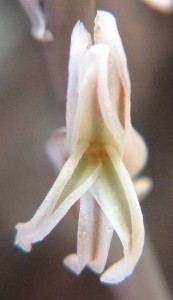

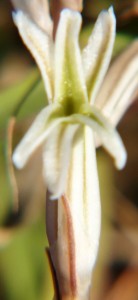
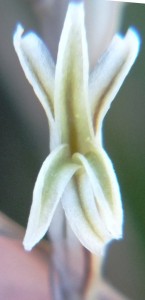

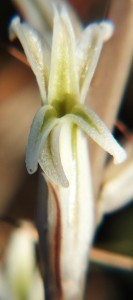
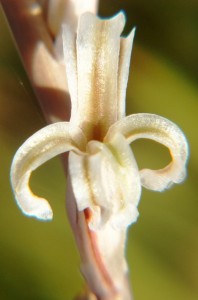
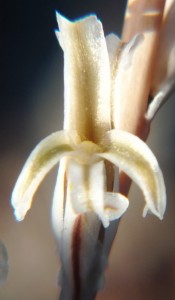

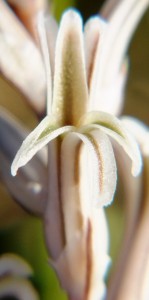
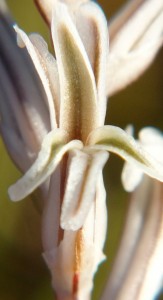
MBB8000 flower profiles
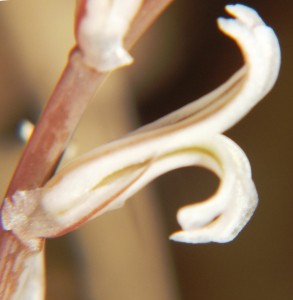
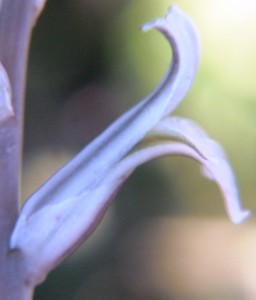



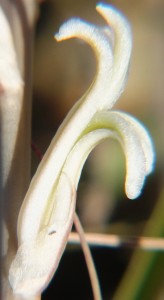
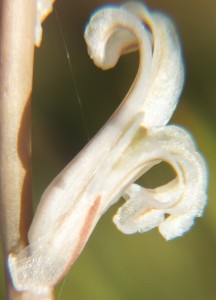
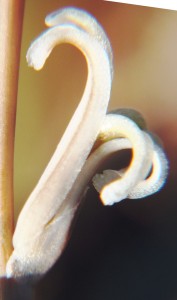
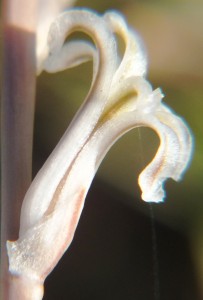
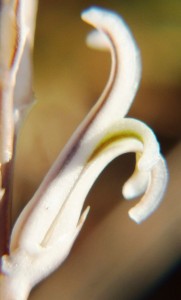
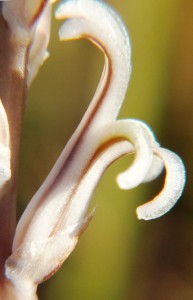
MBB8000 flower bud
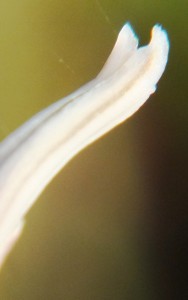
Addendum
To demonstrate the problem of similar looking plants that appear in different populations, I take 3 plants from the original Kruisrivier population (JDV92/65) see figs 1 to 3. Fig. 1 is obviously a mirabiloid plant and if this population flowered in late summer it would probably be identified as H. mirabilis. The figs 2 and 3 are more retusoid. I leave out plants from the newer Kruisrivier population (MBB7999) because none of the plants have the rougher mirabiloid leaf surfaces. I add a Wegwysersrivier (fig. 4 MBB8000) plant that is again mirabiloid and like Fig. 1 except that it appears to be a spring flowering population with a significant number of plants in flower in early July. From there I take a plant from Komserante (MBB7779) that flowers in late summer but is apparently generally hybrid with H. retusa. Moving eastwards from Riversdale and impinging on H. mirabilis splendens, I show a plant MBB7762 from Platkop (fig. 6) where both H. mirabilis and H. retusa occur with occasional hybrids. Fig. 7 is MBB7818 H. mirabilis Windsor SE Riversdale, where the plants frequently have a frosted appearance because of minute surface spines.
There is a significant geographic jump with fig. 8 MBB7850 H. emelyae north of the Langeberg at Aasvoelvallei. This is a population that I have noted elsewhere that highlights the probable relationship of H. emelyae with the H. retusa turgida and pymaeaoid elements from Herbertsdale eastwards. Fig. 9 is a plant of MBB6666 Tradouw Pass that I recognize as a hybrid population H. mirabilisXretusa. Inland from there are several populations, MBB7899 is H. mirabilis, Heuningklip (fig. 10) and MBB7896 H. retusa nigra also Heuningklip (fig. 11). East of that are three populations of H. mirabilis, MBB7912 and MBB7913 Rietkuil and MBB7919 Van Reenens Crest (figs 12 to 14).
As only single plant comparisons, it seems fairly safe to say that, bar flowering time and figs 2 and 3, they are all similar. However, the variability in each of these populations is great and this has been reported elsewhere in the Update volumes. If one had to now take figs 2 and 3 and look for similarities in other populations, it would be very easy to demonstrate a complete gradation from what could be construed as typical H. mirabilis through to typical H. retusa through a large array of populations.
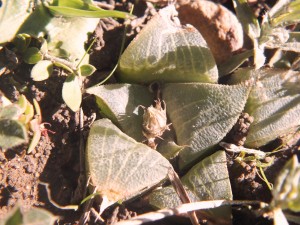
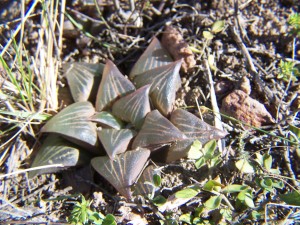
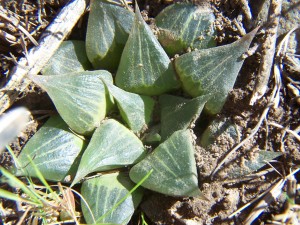


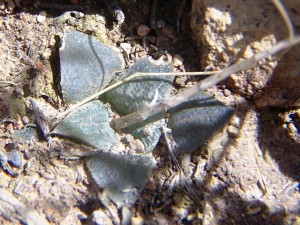
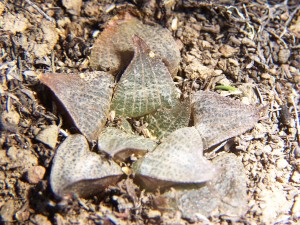

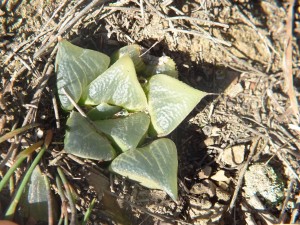
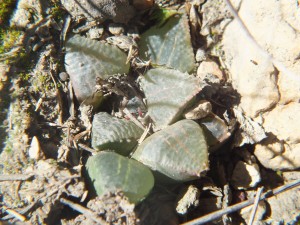

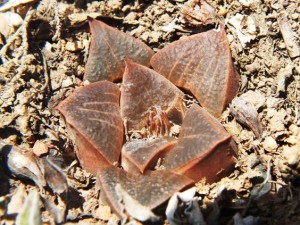
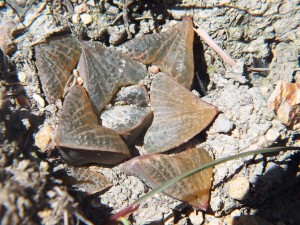
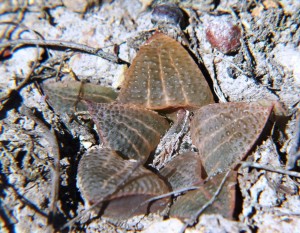
♦
